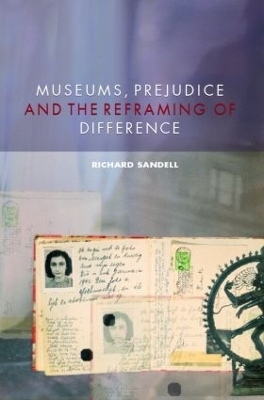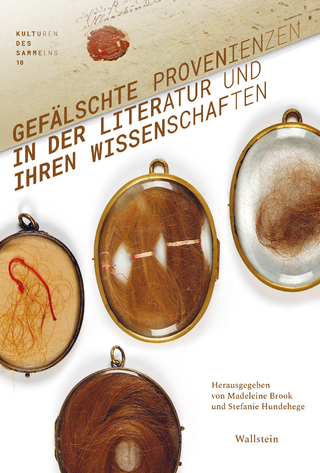
Museums, Prejudice and the Reframing of Difference
Seiten
2006
Routledge (Verlag)
978-0-415-36749-3 (ISBN)
Routledge (Verlag)
978-0-415-36749-3 (ISBN)
This book draws on in-depth case studies and an array of international examples presenting a highly original contribution of the significant role that museums can play in confronting prejudice and cross-cultural understanding.
How, if it all, do museums shape the ways in which society understands difference?
In recent decades there has been growing international interest amongst practitioners, academics and policy makers in the role that museums might play in confronting prejudice and promoting human rights and cross-cultural understanding. Museums in many parts of the world are increasingly concerned to construct exhibitions which represent, in more equitable ways, the culturally pluralist societies within which they operate, accommodating and
engaging with differences on the basis of gender, race, ethnicity, class, religion, disability, sexuality and so on.
Despite the ubiquity of these trends, there is nevertheless limited understanding of the social effects, and attendant
political consequences, of these purposive representational strategies.
Richard Sandell combines interdisciplinary theoretical perspectives with in-depth empirical investigation to address a number of timely questions. How do audiences engage with and respond to exhibitions designed to contest, subvert and reconfigure prejudiced conceptions of social groups? To what extent can museums be understood to shape, not simply reflect, normative understandings of difference, acceptability and tolerance? What are the challenges for museums which attempt to engage audiences in debating morally charged and contested contemporary social issues and how might these be addressed? Sandell argues that museums frame, inform and enable the conversations which audiences and society more broadly have about difference and highlights the moral and political challenges, opportunities and responsibilities which accompany these constitutive qualities.
How, if it all, do museums shape the ways in which society understands difference?
In recent decades there has been growing international interest amongst practitioners, academics and policy makers in the role that museums might play in confronting prejudice and promoting human rights and cross-cultural understanding. Museums in many parts of the world are increasingly concerned to construct exhibitions which represent, in more equitable ways, the culturally pluralist societies within which they operate, accommodating and
engaging with differences on the basis of gender, race, ethnicity, class, religion, disability, sexuality and so on.
Despite the ubiquity of these trends, there is nevertheless limited understanding of the social effects, and attendant
political consequences, of these purposive representational strategies.
Richard Sandell combines interdisciplinary theoretical perspectives with in-depth empirical investigation to address a number of timely questions. How do audiences engage with and respond to exhibitions designed to contest, subvert and reconfigure prejudiced conceptions of social groups? To what extent can museums be understood to shape, not simply reflect, normative understandings of difference, acceptability and tolerance? What are the challenges for museums which attempt to engage audiences in debating morally charged and contested contemporary social issues and how might these be addressed? Sandell argues that museums frame, inform and enable the conversations which audiences and society more broadly have about difference and highlights the moral and political challenges, opportunities and responsibilities which accompany these constitutive qualities.
University of Leicester, UK
1. Museums and the Good Society 2. On Prejudice and Difference 3. The Visitor-Exhibition Encounter: Rethinking Media-Audience Agency 4. Museums and the Mediascape 5. Revealing Hidden Histories and Displaying Difference 6. Museums and Social Responsibility
| Erscheint lt. Verlag | 1.11.2006 |
|---|---|
| Zusatzinfo | 3 Tables, black and white; 28 Halftones, black and white |
| Verlagsort | London |
| Sprache | englisch |
| Maße | 156 x 234 mm |
| Gewicht | 440 g |
| Themenwelt | Kunst / Musik / Theater |
| Reisen ► Reiseführer | |
| Geisteswissenschaften ► Geschichte ► Hilfswissenschaften | |
| ISBN-10 | 0-415-36749-2 / 0415367492 |
| ISBN-13 | 978-0-415-36749-3 / 9780415367493 |
| Zustand | Neuware |
| Haben Sie eine Frage zum Produkt? |
Mehr entdecken
aus dem Bereich
aus dem Bereich
Anforderungen an das digitalisierte Kulturerbe
Buch | Softcover (2023)
transcript (Verlag)
CHF 42,90
Buch | Hardcover (2024)
Wallstein Verlag
CHF 53,20


